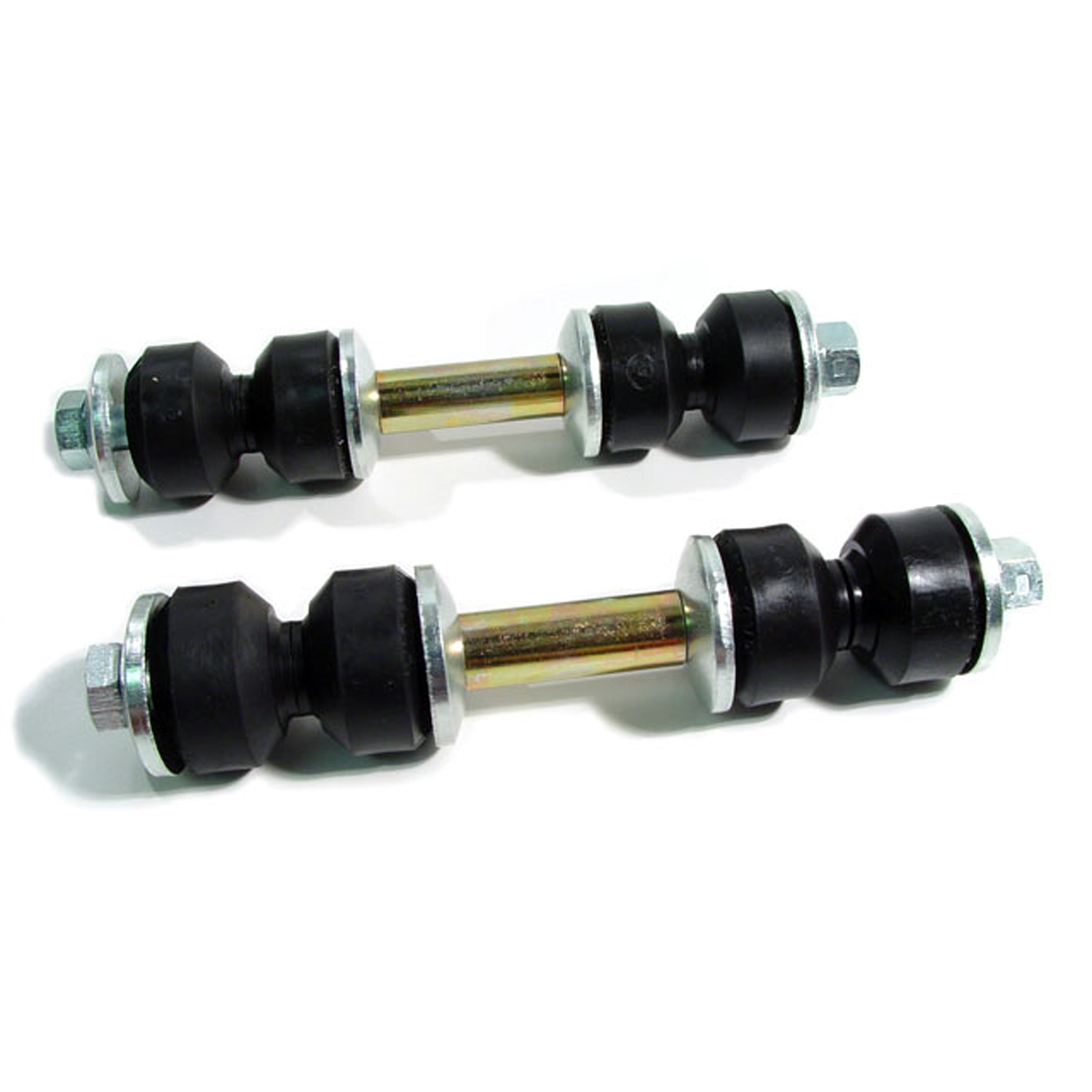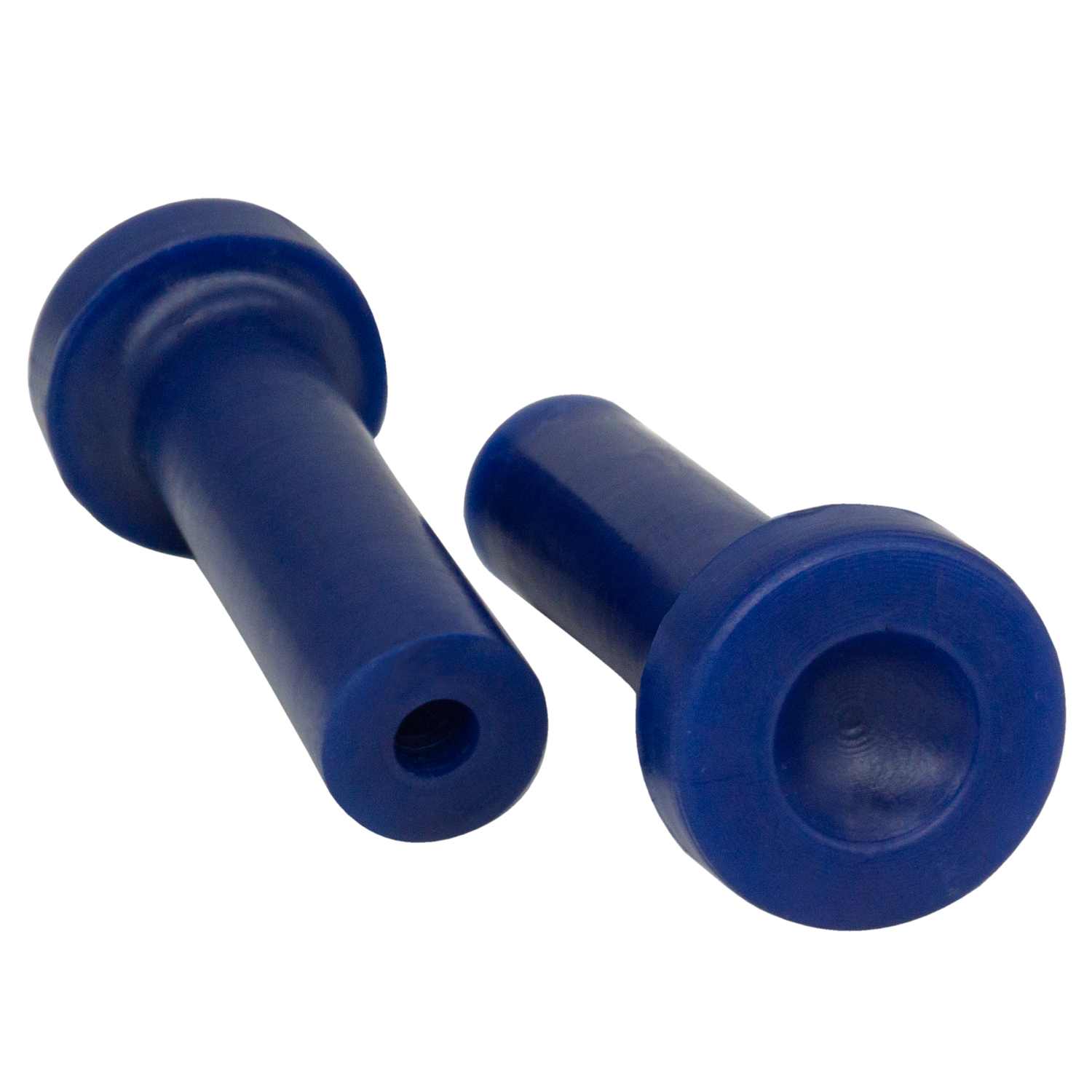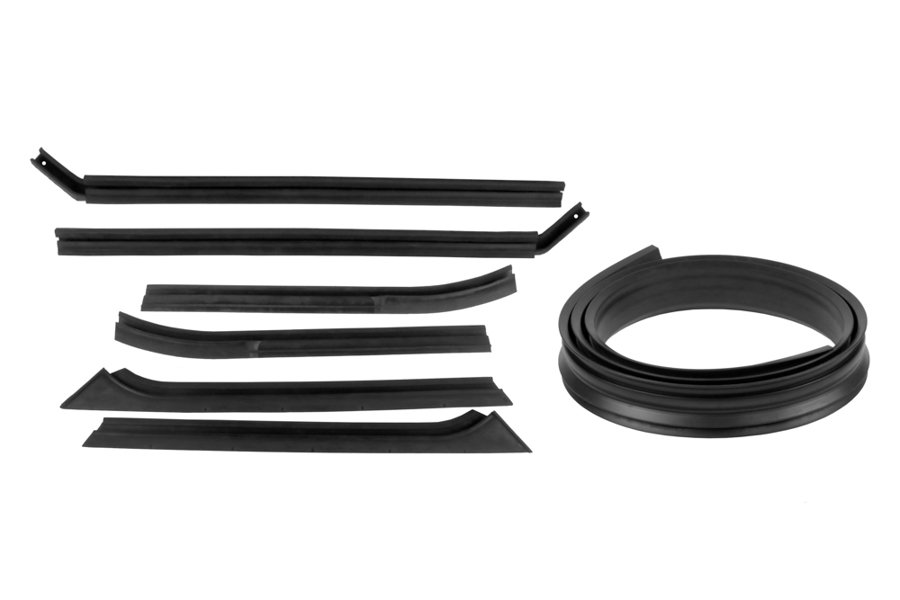Image of 1963 Mercury Comet, Note: These illustrations use artistic license and may differ from actual historical models.
Performance Metrics
Fundamental Metrics
Emotional Appeal
MMP Rating
| Engine Specifications | |
|---|---|
| Engine: | 170 CID I6, 260 CID V8 |
| Displacement: | 170-260 CID |
| Horsepower: | 101-164 hp |
| Torque: | 156-258 lb-ft |
| Compression Ratio: | 8.7:1 (for 170 CID I6), 8.8:1 (for 260 CID V8) |
| Ignition System: | Conventional distributor and coil system |
| Cooling System: | Liquid-cooled |
| Performance Specifications | |
| 0-60 Time: | 10-12 seconds |
| 1/4 Mile Time: | 17-19 seconds |
| Top Speed: | 100-110 mph |
| Transmission and Drive | |
| Drive Type: | Rear-wheel drive |
| Transmission Type: | 2-speed automatic, 3-speed manual |
| Fuel and Efficiency | |
| Fuel System Type: | Carburetor |
| MPG: | 15-20 mpg |
| Dimensions and Brakes | |
| Brakes: | Drum brakes |
| Wheelbase: | 114 inches |
| Weight: | 2,800-3,000 lbs |
Note: Specifications for classic cars are given to the best of our ability, considering the limited and variant data available.
1963 Mercury Comet: A Star in the Compact Galaxy
The 1963 Mercury Comet sails into history as a shining example of early 60s automotive charm, blending performance with style. Born from the stables of the Mercury division of the Ford Motor Company, this vehicle was crafted during an era when space-age excitement influenced car design and names. The Comet was initially conceived to bridge the gap between Ford's basic models and the luxurious Lincoln line-up. A unique piece of trivia that may pique your interest: The Comet, originally intended to be an Edsel model, found its way to Mercury showrooms after the Edsel brand's demise, making it a survivor of sorts in the turbulent automotive waters of its time.
Design and Innovation
The exterior styling of the 1963 Mercury Comet was both elegant and assertive, with a long, sculpted body that hinted at both sophistication and speed. Its stacked quad headlights and subtle tail fins were a nod to the era's fascination with jet propulsion and space exploration. Inside, passengers were treated to a cabin that prioritized comfort with plush seating and quality materials that belied its compact car status. Technological features for its time included an optional Multi-Drive Merc-O-Matic automatic transmission, which provided smooth gear transitions—a luxury in those days.
Color options for the Comet ranged from dignified Polar White to vibrant Carnival Red, with Sultana White being a particularly popular choice among consumers. Body styles varied widely, including sedans, convertibles, hardtops, and even station wagons. However, it was the S-22 sport coupe—complete with bucket seats and distinctive badging—that became an iconic symbol of the Comet's appeal.
Historical Significance
The 1963 Mercury Comet made its mark by offering luxury features in a smaller, more affordable package—a concept that would become increasingly popular in subsequent decades. It stood out from competitors with its upscale presentation and proved that compact cars didn't have to sacrifice style or comfort for efficiency.
Performance and Handling
Under the hood, the Comet could be equipped with engines ranging from a thrifty 101-horsepower inline-six to a more robust 260-cubic-inch V8. While not a muscle car by later standards, the V8 models offered respectable performance for their time, achieving 0-60 mph in under ten seconds—a quick pace for a compact car of this era. On the road, drivers enjoyed a smooth ride thanks to well-tuned suspension systems that absorbed bumps competently while providing enough feedback to feel engaged with the driving experience.
Ownership Experience
Owners of the 1963 Mercury Comet used their vehicles in various ways—from daily commuting to weekend cruising and even amateur racing. The car's reliability was commendable for its time, though modern enthusiasts should note that parts may now be scarcer due to age. Maintenance is straightforward for those familiar with classic car care, making it an accessible piece of history for collectors and hobbyists alike.
Fun Facts
The Comet had its share of limelight moments; it was chosen as the pace car for several stock car races in its heyday. While not known for setting speed records, it did set sales records for Mercury at launch. Criticisms were few but did include remarks on its conservative styling compared to flashier rivals.
Collector's Information
Today's collector market sees the 1963 Mercury Comet as a desirable classic. Estimates suggest that tens of thousands were produced across all body styles. Values can vary widely based on condition and originality but generally range from $5,000 for a project car up to $30,000 or more for pristine examples or rare configurations like the S-22 convertible. The market trend shows appreciation over time as these vehicles become rarer and more sought after by enthusiasts.
Conclusion
The 1963 Mercury Comet stands as a testament to an era when even compact cars were designed with flair and offered surprising luxury. Its blend of style, performance, and practicality has cemented its place in automotive history as a beloved classic that continues to capture hearts today.
1963 Mercury Comet Catalog of Parts
 1963 Mercury Comet Power Steering Stop Insulator. Die stamped. 1-7/16" O.D-BN 107-APower Steering Stop Insulator. Die stamped. 1-7/16" O.D., 1-1/16" I.D., .808 thick. Each
1963 Mercury Comet Power Steering Stop Insulator. Die stamped. 1-7/16" O.D-BN 107-APower Steering Stop Insulator. Die stamped. 1-7/16" O.D., 1-1/16" I.D., .808 thick. Each 1963 Mercury Comet Shock Absorber Grommet. 1-1/4" bottom O.D., 1" high-BN 12Shock Absorber Grommet. 1-1/4" bottom O.D., 1" high., with 3/4" I.D. Each
1963 Mercury Comet Shock Absorber Grommet. 1-1/4" bottom O.D., 1" high-BN 12Shock Absorber Grommet. 1-1/4" bottom O.D., 1" high., with 3/4" I.D. Each 1963 Mercury Comet Stabilizer Bar Bushings-BN 32-DStabilizer Bar Bushings. 1-9/16" long X 1-1/2" wide X 1-5/8" high, 15/16" I.D. Pair
1963 Mercury Comet Stabilizer Bar Bushings-BN 32-DStabilizer Bar Bushings. 1-9/16" long X 1-1/2" wide X 1-5/8" high, 15/16" I.D. Pair 1963 Mercury Comet Front Stabilizer End Repair Kit-BNK 22Front Stabilizer End Repair Kit. 22-piece set for two stabilizer bars. Contains all rubber bushings, washers, bolts and nuts, enough for one front end. Set
1963 Mercury Comet Front Stabilizer End Repair Kit-BNK 22Front Stabilizer End Repair Kit. 22-piece set for two stabilizer bars. Contains all rubber bushings, washers, bolts and nuts, enough for one front end. Set 1963 Mercury Comet Hood Bumper. Made with steel core. Held by screw. Each-HF 40Hood Bumper. Made with steel core. Held by screw. Each
1963 Mercury Comet Hood Bumper. Made with steel core. Held by screw. Each-HF 40Hood Bumper. Made with steel core. Held by screw. Each 1963 Mercury Comet Door Seals, 63-65 Ford Falcon & Mercury Comet 2 Doors, Pair-LM 10-MDoor Seals, 63-65 Ford Falcon & Mercury Comet 2 Door Hardtops and Convertibles, Pair. This seal mounts on the door with weatherstrip adhesive (not included). This product is made from the original specs and with high quality ozone resistant EPDM rubber for a great fit and long life.
1963 Mercury Comet Door Seals, 63-65 Ford Falcon & Mercury Comet 2 Doors, Pair-LM 10-MDoor Seals, 63-65 Ford Falcon & Mercury Comet 2 Door Hardtops and Convertibles, Pair. This seal mounts on the door with weatherstrip adhesive (not included). This product is made from the original specs and with high quality ozone resistant EPDM rubber for a great fit and long life. 1963 Mercury Comet Antenna Base Pad. 1-5/8" wide X 2-1/8" long. Each-MP 800-GAntenna Base Pad. 1-5/8" wide X 2-1/8" long. Each
1963 Mercury Comet Antenna Base Pad. 1-5/8" wide X 2-1/8" long. Each-MP 800-GAntenna Base Pad. 1-5/8" wide X 2-1/8" long. Each 1963 Mercury Comet Generator Boot. Replaces OEM #C1AZ10170B-RP 2-FGenerator Boot. Replaces OEM #C1AZ10170B. Note: Notch may have to be cut by purchaser. Each
1963 Mercury Comet Generator Boot. Replaces OEM #C1AZ10170B-RP 2-FGenerator Boot. Replaces OEM #C1AZ10170B. Note: Notch may have to be cut by purchaser. Each 1963 Mercury Comet Door Lock Knob. Black Rubber. Each-RP 306Door Lock Knob. Black Rubber. Each
1963 Mercury Comet Door Lock Knob. Black Rubber. Each-RP 306Door Lock Knob. Black Rubber. Each 1963 Mercury Comet Door Lock Knob. 1-1/2" high. Made of red rubber. Each-RP 306-ADoor Lock Knob. 1-1/2" high. Made of red rubber. Each
1963 Mercury Comet Door Lock Knob. 1-1/2" high. Made of red rubber. Each-RP 306-ADoor Lock Knob. 1-1/2" high. Made of red rubber. Each 1963 Mercury Comet Door Lock Knob. 1-1/2" high. Made of blue rubber. Each-RP 306-BDoor Lock Knob. 1-1/2" high. Made of blue rubber. Each
1963 Mercury Comet Door Lock Knob. 1-1/2" high. Made of blue rubber. Each-RP 306-BDoor Lock Knob. 1-1/2" high. Made of blue rubber. Each 1963 Mercury Comet Door Lock Knob. 1-1/2" high. Made of turquoise rubber-RP 306-CDoor Lock Knob. 1-1/2" high. Made of turquoise rubber. Each
1963 Mercury Comet Door Lock Knob. 1-1/2" high. Made of turquoise rubber-RP 306-CDoor Lock Knob. 1-1/2" high. Made of turquoise rubber. Each 1963 Mercury Comet Door Lock Knob. 1-1/2" high. Made of beige rubber. Each-RP 306-DDoor Lock Knob. 1-1/2" high. Made of beige rubber. Each
1963 Mercury Comet Door Lock Knob. 1-1/2" high. Made of beige rubber. Each-RP 306-DDoor Lock Knob. 1-1/2" high. Made of beige rubber. Each 1963 Mercury Comet Brake Booster Boot. Each-RP 32-AABrake Booster Boot. Each
1963 Mercury Comet Brake Booster Boot. Each-RP 32-AABrake Booster Boot. Each 1963 Mercury Comet Convertible top rail kit including header seal fits 63-67 Falcon and Comet-RR 6300Convertible top-rail kit. '63-'67 Falcon and Comet convertibles only. Includes all left-side and right-side top-rail seals and windshield top header seal. Made from the OEM specs to install and fit for an authentic appearance.
1963 Mercury Comet Convertible top rail kit including header seal fits 63-67 Falcon and Comet-RR 6300Convertible top-rail kit. '63-'67 Falcon and Comet convertibles only. Includes all left-side and right-side top-rail seals and windshield top header seal. Made from the OEM specs to install and fit for an authentic appearance. 1963 Mercury Comet Hood Bumper. Snap-in wire base like original. Each-SB 89-AHood Bumper. Snap-in wire base like original. Each
1963 Mercury Comet Hood Bumper. Snap-in wire base like original. Each-SB 89-AHood Bumper. Snap-in wire base like original. Each 1963 Mercury Comet Door & Tailgate Bottom Drain Seal-SM 64-ADoor & Tailgate Bottom Drain Seal. Uses up to 10 per car or 12 per station wagon. Replaces OEM #C3AZ6220700B. 3" Long. Each
1963 Mercury Comet Door & Tailgate Bottom Drain Seal-SM 64-ADoor & Tailgate Bottom Drain Seal. Uses up to 10 per car or 12 per station wagon. Replaces OEM #C3AZ6220700B. 3" Long. Each 1963 Mercury Comet Trunk Seal, 14'1" long. Fits all models except Fastback-TK 51-A/14Trunk Seal, 14'1" long. Fits all models except Fastback. Each
1963 Mercury Comet Trunk Seal, 14'1" long. Fits all models except Fastback-TK 51-A/14Trunk Seal, 14'1" long. Fits all models except Fastback. Each 1963 Mercury Comet Window Sweeper Kit Fits 63-65 Falcon/Comet Convertible. 8 piece set-WC 1400-15This eight (8) piece set is a must-have for anyone looking to keep their car's side windows clean. The inner and outer felt beltline weatherstrips are perfect for the door and quarter windows, wiping the glass when it's lowered. They're easy to install, with finished ends and body curvature bends for a factory like appearance.
1963 Mercury Comet Window Sweeper Kit Fits 63-65 Falcon/Comet Convertible. 8 piece set-WC 1400-15This eight (8) piece set is a must-have for anyone looking to keep their car's side windows clean. The inner and outer felt beltline weatherstrips are perfect for the door and quarter windows, wiping the glass when it's lowered. They're easy to install, with finished ends and body curvature bends for a factory like appearance. 1963 Mercury Comet Flexible Sweeper. Made of rubber-WC 23-/FTFlexible Sweeper. Made of rubber. Seal for outside of side window. Sold by the foot
1963 Mercury Comet Flexible Sweeper. Made of rubber-WC 23-/FTFlexible Sweeper. Made of rubber. Seal for outside of side window. Sold by the foot 1963 Mercury Comet Flexible Sweeper. Made of rubber-WC 23-48Flexible Sweeper. Made of rubber. Seal for outside of side window. 48" Piece. Each
1963 Mercury Comet Flexible Sweeper. Made of rubber-WC 23-48Flexible Sweeper. Made of rubber. Seal for outside of side window. 48" Piece. Each 1963 Mercury Comet Flexible Sweeper. Made of rubber-WC 23-96Flexible Sweeper. Made of rubber. Seal for outside of side window. 96" Piece. each
1963 Mercury Comet Flexible Sweeper. Made of rubber-WC 23-96Flexible Sweeper. Made of rubber. Seal for outside of side window. 96" Piece. eachWhy Choose Metro?
For over 100 years, Metro Moulded Parts has been the pinnacle of quality in classic car restoration parts. Our commitment to precision and authenticity in every component ensures a perfect fit and an OEM-level appearance.
- Expert Craftsmanship & Quality: Each part is a testament to our dedication to reliability and perfection, crafted from original designs and thoroughly tested.
- Advanced Technology: We use cutting-edge techniques to create flawless, long-lasting parts that surpass others in performance.
- SuperSoft Sponge – The Ultimate Door Seal: Not only are our door seals 30% softer than competitors', but they're also guaranteed to never leak. They effectively reduce wind and road noise, enhancing your classic car's comfort and driving experience.
- Proudly American: Our parts are a product of American craftsmanship, made in the USA with a spirit of excellence and heritage.
- Unrivaled Warranty: We back our products with a 30-year industry-leading warranty, a testament to our confidence in their quality.
Join us in preserving the legacy of classic cars with parts that are crafted for perfection, not just made.

